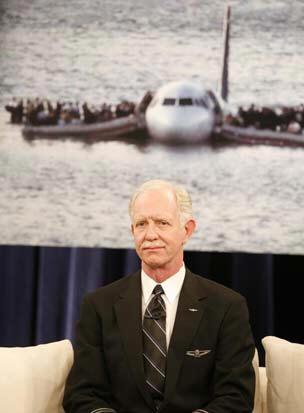
NEWSROOM
 |
NEWSROOM |
|
|
|
||||
|
By Mike Mitchell (See FAA To Change Age Retirement Rules For Air Traffic Controllers) |
||||
|
|
||||
 |
November 2, 2009 -
The Fair
Treatment for Experienced Pilots Act (the act) extended the federal
age standard for pilots of large commercial
aircraft from 60 (Age
60 Rule) to 65 years of age. The act also required Government
Accountability Office (GAO) to report--no later than 24 months after its
enactment--on the effect, if any, of this change on aviation safety.
This report responds to that requirement. Early Indications show that increasing the Age Limit for Commercial Airline Pilots has no effect on aviation safety. FAA’s and NTSB’s accident and incident data showed no adverse safety effects attributable to the increase in the age limit for pilots.
At the
Government Accountability Office (GAO)
request, both agencies reviewed their respective databases for the
period from December 2007 through September 2009 and found that no
accidents or incidents during that period resulted from the health
conditions of pilots 60 years or older. FAA’s Accident and Incident Data
System (AIDS) captured seven incidents involving captains aged 60 and
61, but no health or cognitive issues of any kind were reported for
these incidents. GAO review of FAA's accident and incident data and NTSB's accident data from December 2007, when the act was enacted, through September 2009 showed that no accidents or incidents resulted from the health conditions of pilots 60 years or older. |
|||
|
However, for a more definitive assessment, a longer period of time would
be required to collect data for similar groups--both pilots 60 years or
older and younger pilots-- to determine if the act's change in the age
standard for commercial pilots has any effect on aviation safety. Such a
study is not yet feasible because the act is too recent for flight
records to be available for a sufficient number of pilots 60 years or
older.
In 1960 FAA established 60 as the age limit for pilots of large
commercial aircraft out of concern for public safety. At that time, FAA
stated that certain important physiological and psychological functions
progressively deteriorated with age, that significant medical defects
attributed to the aging process occurred at an increasing rate as an
individual grew older, and that sudden incapacity due to such medical
defects became more frequent in any group reaching age 60. The benefits
of experience in the cockpit may, however, offset the potential for
health issues related to age. The value of such experience was recently
demonstrated when a
57-year-old pilot safely landed his
U.S. Airways jetliner in New
York’s Hudson River on January 15, 2009, after the aircraft
was crippled by bird strikes while taking off from LaGuardia
International Airport. |
||||
|
In November 2006, the International Civil Aviation Organization, the
United Nations aviation organization that develops standards for
international aviation activities, increased the age limit for certain
pilots—i.e., those pilots engaged in operations with more than one
pilot—to 65 years, provided the other pilot in the cockpit is under age
FAA has established a number of rules regarding pilots of large
commercial aircraft to help ensure safety. For example,
pilots-in-command, also referred to as captains, must have medical
checkups—including an electrocardiogram—every 6 months and first
officers must have them annually.9 Depending on the crew configuration
of the aircraft, FAA regulations restrict the amount of time pilots can
spend in flight or crew duty status during a 24-hour consecutive period
as well as the number of hours they are allowed to fly in 12 calendar
months.10 Generally, pilots are allowed only 8 hours of flight deck duty
during any 24-hour period. These rules help reduce the affects of pilot
fatigue on safety. FAA rules also require both the captain and the first
officer11 to be in their seats during critical phases of the flight,
including takeoffs and landings. This rule helps ensure that even in the
event of a sudden death at such a juncture, the surviving pilot would be
able to keep the plane flying safely.
Table 1 summarizes information about these seven incidents. The data
from FAA’s and NTSB’s databases during that period showed a total of 460
events, consisting of 54 accidents and 406 incidents, for pilots of
large commercial aircraft who were younger than 60.12 NTSB’s Accident
Database included no health-related events—accidents— involving pilots
60 years or older that occurred during GAO review period. Table 1: Aviation Incidents Involving Pilots 60 Years or Older, December 2007 through September 2009
According to the Executive Director of the Aerospace Medical
Association, to definitively determine whether advancing age—in this
case, reaching age 60 or older—presents an added risk to flight safety
because of cognitive or neurophysiological changes or sudden
incapacitation due to a medical condition, one would need data for a
large enough cohort of commercial pilots under age 60 and a similar
cohort of commercial pilots aged 60 or older to compare their respective
flying records over a period of years. However, sufficient data are not
yet available for such a comparison because of the recency of the act.
GAO noted that other factors, such as flight conditions, would also have to be considered in such a comparison. Therefore, it is premature to conclude that the increase in the age limit for pilots to age 65 will or will not have an impact on a pilot’s performance and aviation safety. As stated in the act, carriers are required to monitor the performance of all pilots with a special emphasis on pilots who have attained 60 years of age. |
|||
| ©AvStop Online Magazine Contact Us Return To News |